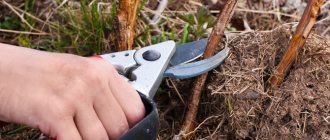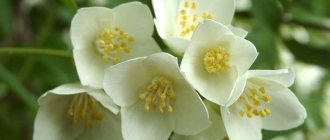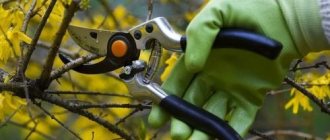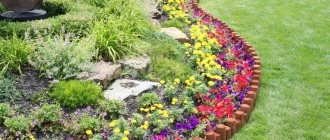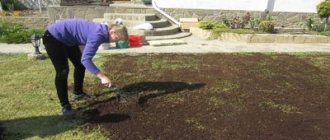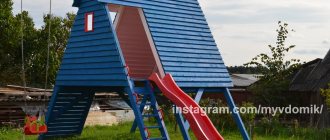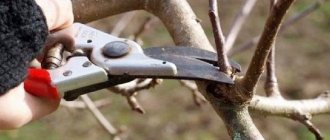You've probably already thought about where to start caring for your area in the spring. There is a lot of work ahead, it seems that there is not enough time for everything. But don't worry, we'll cover the basics. Now you will be sure that the most important thing has been successfully completed!
The long-awaited spring in the garden sometimes comes unexpectedly. In nature, everything is thought out, and when the first warmth replaces the cold, the dacha will wake up from its winter sleep. The first sprouts of greenery and buzzing insects will appear, and the buds of the trees will fill with sap.
After wintering, plants and soil especially need your care, so try to pay attention to every corner of the site. And we will tell you what important things should be done at the dacha in the spring, where to start first. Take note!
Trim trees and bushes
It is best to start work at the dacha in the spring in the garden, where it is worth carrying out sanitary pruning of fruit trees and berry bushes. To do this, remove winter shelters, remove diseased, weak and broken branches, as well as those that interfere with each other’s growth.
Do not forget to clear the trunks - the lower sections of the trunk from the root collar to the first branches - from the old bark. Remove mosses and lichens, and also seal large cracks: clean them with a sharp knife to healthy tissue and treat with garden varnish.
- Pruning trees and shrubs - tips and tricks
How to prune trees and shrubs for a beginner and what you need to know for this - find out from our article!
The cuts must be even. Do not leave stumps, which can become sources of infection.
Raspberries in the country in the spring also require pruning. Weakened shoots and the top five buds should be removed to stimulate the formation of basal shoots. Currants and gooseberries will also require attention - thin out the bushes and remove frozen branches, as well as branches affected by diseases and pests.
- 7 ways to trim a tree or bush branch
Let's figure out what the different techniques for pruning branches are for.
- 12 mistakes you make when pruning plants
Although pruning plants is one of the most important and regular maintenance procedures, it is not always done correctly.
April. Work in mid-spring
At this time, fruit trees and perennials are usually planted.
Since sap flow begins in most crops in April , it makes sense to vaccinate them.
Due to fewer frosts, temperatures in April allow you to work with liquids more freely, which makes it possible to treat plants using sprays.
Works with greenhouses
Butterfly greenhouse - an ideal solution for quick ventilation
Rising air temperatures in April mean greenhouse conditions are too hot for some of the crops grown in them. Therefore, in April, greenhouses begin to open for ventilation for a longer time. In some cases, it is even possible to completely remove the film covering from greenhouses and mini-greenhouses, since their protection from frost no longer makes sense.
Such events lead to changes in plant watering regimes - they will need to be watered more often, since moisture will quickly evaporate from the surface, making it dry. At this stage, you should take more careful care of such plants, since there is a high probability of weeds appearing in the beds. Plantings of such crops are regularly loosened, and weed sprouts are removed as they appear.
Tree planting
The location of the apple tree seedling in the hole when planting
The recommended timing for planting fruit trees is from the first ten days of April to the first ten days of May. At this time, any fruit trees and shrubs are planted. The mechanism for planting these plants is quite stereotypical and, in principle, practically does not depend on the variety.
Purchased seedlings are stored in basements until planting. As a rule, the plant, together with a lump of earth placed in burlap, remains in the cold with a temperature no higher than +5°C.
Some types of fruit trees, for example, apricots, which have relatively early flowering, should be planted as soon as weather conditions allow (the soil has warmed to a sufficient depth).
Differences may occur in the depth of planting holes, the type of fertilizer used, and drainage methods. For example, when choosing a site for planting fruit crops, you need to know that the groundwater level for apple and pear trees should not be higher than 1.8 m, for plums and cherries - 1.5 m, and so on.
Otherwise, the procedure is more or less standard. Cone-shaped earthen mounds are poured into holes prepared in advance, on which seedlings are placed, covering them with earth mixed with fertilizers. Planting is completed by compacting the soil and watering.
Watering the tree after planting
Depending on the type of plant being grown, mulching and protecting young seedlings from the sun may be used. In the case of preparing a hole during planting, it is more preferable to apply mineral fertilizers.
Graft
Grafting an apple tree into a cleft with treating the grafting site with garden varnish
The optimal timing for vaccinations is the first week after the start of sap flow. Usually, at this time, the buds of the selected crops are just beginning to swell and bloom.
Spring grafting can be carried out using any of the following methods:
- into the cleft;
- in the butt;
- copulation;
- in the side section.
It is better to do other methods of grafting (for example, budding) a little later - starting in May or June, when sap flow processes are most active.
During the vaccination process, disinfected instruments should be used. When moving from one tree to another, disinfection should be repeated.
Planting vegetables, berries and ornamental crops
Spring planting of tulips
Higher temperatures significantly expand the list of plants that can be planted in open ground. In addition to the previously listed cold-resistant crops, in April you can plant:
- radish;
- turnip;
- sorrel;
- salad;
- celery;
- late carrots;
- potato.
At the end of April you can start planting berry crops:
- strawberries;
- strawberries;
- lingonberries;
- currants;
- raspberries
Black currant in spring
Among the flowers that are recommended to be planted in April are the following:
- bindweed;
- Iberis;
- calendula;
- cosmos;
- poppy;
- lupine;
- peonies;
- daffodils;
- phlox;
- chrysanthemums;
- dolphins;
- tulips;
- daylilies and other bulbous plants.
Planting tulips
Before planting bulbous plants in the ground, you should carefully inspect your bulbs after they have been stored for the winter. If they are affected by onion mites, they should be destroyed.
Some ornamental plants can be sown in flowerpots or pots located on the terrace or balcony. At the same time, do not forget that with the onset of cold weather, it is recommended to bring them indoors.
Working with grapes
Pruning grapes in spring
A separate part of gardening work is caring for grapes. This month, as a rule, the vine begins to weep and therefore it is recommended to take care of the crop in advance. All work related to the formation of bushes and vines must be completed at the beginning of the month.
Despite the fact that caring for grapes in the spring is relatively simple (the crop does not actually require formative pruning in the spring), one should not forget about the possible consequences of wintering. If the bush is damaged in any way in winter, it should be properly pruned again. In fact, this will be sanitary pruning, but it should be carried out in such a way as not to change too much the configuration of the bush, made in the fall during the process of formative pruning.
Grape shoots should be pruned and treated with antifungal substances at the end of March or beginning of April, before the start of sap flow.
Excessively moistening the soil under the grapes while the vine is weeping is undesirable
Work with ornamental crops in mid-spring
Watering lawn grass in April
In mid-April, active work begins on flower beds, as well as with other landscape design solutions. First of all, it should be noted the work with roses. Already in the second ten days of April, roses with an open root system can be planted.
Around the same time, spring work is carried out in the rose garden:
- pruning;
- installation of supports and trellises;
- fertilizer for roses;
- mulching;
- pest control.
Active growth of grass on lawns also begins in April. It is recommended to start lawn care with removing debris. Then it should be watered abundantly and replanted in areas where the grass has been trampled or died. From the end of April, regular watering of lawn grass begins.
In the third ten days of April, after most of the leaves have appeared, the first trimming of hedges and thinning of the crowns of shrubs is carried out.
Feeding
Adding wood ash to the planting hole
In April, the first fertilizing of some perennial crops is traditionally carried out. Typically, it consists of fertilizers in which nitrogen predominates. At this stage, it would be correct not to use saltpeter, giving preference to urea or superphosphate.
Of the mineral fertilizers, the most popular are rotted manure and compost prepared from last year. Wood ash is often used. It will help the seedlings of all crops to obtain the missing minerals.
Remove trash from the area
In early spring, a dacha sometimes looks untidy due to accumulated garbage. Therefore, carefully rake the leaves and branches, remove the remains of last year's fruits and animal excrement. Place plastic bottles and plastic bags in trash containers, and put organic matter in a compost heap - you will need it later.
Wait until the ground dries out a little after the snow melts and get to work. This will make cleaning the area in the spring much easier.
It's also a good time to say goodbye to outdated garden decor, broken tools and broken pots. You can try to give some things a new life.
- Country life hacks: new life for unnecessary things
10 Free Ways to Make Garden Tools from Nothing.
Prepare your greenhouse for the new season
Inspect the greenhouse and repair if necessary. Then rinse inside and out. For polycarbonate you can use a solution of potassium permanganate, for metal and plastic - vinegar, for metal profiles - slaked lime. It is enough to rinse wooden surfaces with plain water. It is also worth disinfecting against pests using special preparations that are sold in the store.
Then dig up the soil and apply, for example, nitroammophoska or other complex fertilizer. It is good to use humus (up to 6 kg per 1 sq.m.), as well as peat or compost. Calculate doses taking into account the needs of the crops grown.
- Preparing a polycarbonate greenhouse for spring planting
As soon as the snow melts at the dacha, you need to start preparing the greenhouse for planting. It consists of several stages, so give it a couple of days.
What to do in the garden in spring
In spring, it’s time for the main preparatory activities in the garden and greenhouses. During this period, you need to pay attention to winter crops, perennial crops, as well as prepare ridges in open ground and in greenhouses for planting and sowing work.
Main events
The garden is cleared of debris and plant debris. It is also necessary to remove all shelters that covered winter crops and the least cold-resistant garden crops during the winter.
As soon as the greenhouse soil warms up, you need to dig it up with one shovel. At the same time, it is necessary to apply basic fertilizers:
- on cucumber beds, about 5–6 kg of high-quality humus is applied per square meter, with the addition of 50 g of any complex fertilizer and a couple of glasses of wood ash;
- on beds prepared for growing tomatoes, peppers and eggplants, the dose of humus will need to be halved;
- when preparing “warm beds”, the top 15 cm of soil should be removed, then the biomass should be laid and covered with a layer of fertile soil.
During the same period, film garden structures should be prepared. The time for stretching the film cover over the greenhouses must be calculated in such a way that in the last ten days of April it is possible to sow the most cold-resistant and early-ripening garden crops.
It is important to check the condition of the above-ground part of garden berry gardens and replace the old mulch layer. It is best to use organic matter as mulch, represented by:
- sawdust;
- compost;
- tree bark and wood chips;
- straw;
- rotted leaves.
A good result is achieved by using mulching covering fabric. In March or April, the garden soil is fertilized with complex universal fertilizers “Nitroammofoska” or “Azofoska”.
When to start planting at the dacha
Sowing and planting cold-resistant garden crops must be done while the soil is still in a soft and plastic state. During this period, the soil is already sufficiently warmed up and contains the optimal amount of moisture for the growth and development of crops.
It is recommended to dig up the soil immediately before sowing or planting, which will not allow moisture to evaporate. If necessary, all dug up ridges, in order to preserve moisture, must be covered with plastic film before sowing, which is fixed with stones.
Prepare beds for future sowing
Work in the garden in the spring begins with preparing the land. It is important to carefully awaken the soil so that later it will be easier when planting seedlings. It is easy to warm up the beds using a black and white two-layer film, which is laid out on the surface. And later, when it gets warmer, start loosening with a rake, but not too deep so as not to disturb the soil structure.
A great way to warm up the soil is to add organic matter to it - compost, manure, chicken droppings, etc. These materials will generate heat and at the same time fertilize future beds.
If the soil is too acidic, liming needs to be done. Apply 550 g of lime per 1 sq.m and loosen the soil well to a depth of 6 cm. Now your plants will be protected from growths on the roots (clumps) and wireworms! And to feed the soil, be sure to apply nitrogen fertilizers (5-12 g per 1 sq.m.).
- Preparing a bed for planting, or 3 ways to “awaken” the soil
Increase seed germination and seedling survival rate several times!
Spring lawn renewal
In order for the silky grass of the lawn to please the eye throughout the summer, from early spring it is necessary to carry out a whole range of measures, the main of which are:
- feeding;
- combing;
- aeration;
- weeding.
Seeded and rolled lawns respond equally well to early fertilizing with nitrogen fertilizers, which should be applied immediately after the snow melts. Nitrogen in combination with phosphorus and potassium gives the growing grass strength, so fertilizing can be done even before the first shoots appear. One of the suitable fertilizers is “Kimera”.
The next stage is aeration and combing. Over the winter, a lot of debris and plant felt has accumulated, which interferes with free growth and lighting. The most suitable tool for combing the lawn is an electric verticulator, which carefully collects the felt. To prevent dense soil from becoming a barrier to the air needed by the roots, use an aerator or an ordinary fork, methodically piercing the soil with it. Towards the end of spring, weeding should be done. If the number of weeds is small, the manual method is sufficient; otherwise, chemical weeding with herbicides is used.
More information about lawn care technology can be found in the material:
For uniform and dosed application of fertilizers to the lawn, there are many devices, one of which is a convenient cart on two wheels
If the lawn is small in size, then for the combing procedure you can use a regular garden rake, and for aeration - a pitchfork
Start grafting trees
Your favorite cherry tree has stopped bearing fruit, and the fruits from the apple tree have lost their former sweetness? So, it's time to regraft the trees! This method allows you to rejuvenate the plant and get a good harvest of several varieties. Before the procedure, carefully select the parent tree and cuttings. And remember that the key to successful spring grafting is to start it during sap flow, when the plant is full of vitality.
Closely related plants are selected for grafting, but not necessarily within the same species. For example, a pear cutting can take root on serviceberry, quince and even rowan! Plum and peach will grow well on felt cherry, and Japanese quince on hawthorn.
- Grafting fruit trees in spring: timing and methods
Recommendations for spring grafting of trees in your garden.
The primary task is cleaning the area
You should start preparing for the spring season by putting things in order.
Many people usually cover trees for the winter, wrap the trunks of standard trees, conifers and non-frost-resistant shrubs. Now it's time to give the plants freedom.
Tree trunks can be covered with whitewash, it will protect them from pests and the hot sun.
The next step is to clear the garden soil of last year's leaves, sticks and other debris.
Start making compost
Compost is an invaluable fertilizer that even a novice summer resident can prepare. It uses trimmed branches, leaves, potato peelings, onion peels and other natural waste. Plants often lack organic matter, so this method will allow you to grow a good harvest with a minimum of financial costs.
Do not add leaves from diseased trees to the compost to avoid introducing infection with them.
- Compost - how to prepare it correctly and quickly
Find out how to properly prepare compost with your own hands and use it effectively in your garden.
Spend the first spring sowing of vegetables and herbs
In April, you can already sow seeds of cold-resistant crops in the garden. Even if your site is located in a warm place, sheltered from the wind, planting in the spring begins only after the soil has warmed up to at least 5°C.
What can be sown in early spring:
- beans;
- peas;
- carrot;
- parsley;
- dill;
- parsnip;
- turnip;
- celery;
- spring garlic;
- early varieties of white cabbage, cauliflower and broccoli.
To sow vegetable seeds, choose a well-lit, low-wind area.
In free beds, sow cold-resistant green manures that restore soil fertility. A good option is rye, winter and spring rapeseed, mustard, oats, etc. Plant green manure that has grown but has not had time to bloom into the soil 2-3 weeks before planting or sowing the main crop, so that they have time to decompose and fertilize the ground.
Vegetable grower work calendar
In March
At the beginning of the month, you need to start preparing nutritious soil for seedlings, steam it and disinfect it. Soak the seeds (be sure to check them for germination) of eggplants, tomatoes, peppers, cucumbers and sow them for seedlings. Celery also requires planting.
It's time to inspect the bulbs of flowering plants, remove all diseased and dried out ones.
The second decade is suitable for picking and feeding cabbage seedlings.
Beds with perennial plants should be sprinkled with ash or peat and covered with some kind of insulation. This technique will help the plants begin to grow faster.
The third ten days of the month are suitable for picking peppers and tomatoes. After transplanting, they should be fed.
You can start preparing greenhouses for the season, repair them and treat them with disinfectants, and pin down raspberries that have been bent to the ground for the winter.
In April
In the first decade, you need to put potatoes to sprout, and in the last decade you can plant roses for those who have these flowers overwintered in the basement.
It's time to sow late varieties of cabbage: cauliflower, white cabbage and red cabbage.
If winter sowing of vegetable seeds was carried out, now is the time to remove the coverings and loosen the soil between the rows.
Do not forget!
Rhubarb and sorrel plantings are fed with nitrogen fertilizer, diluting 3 tbsp in a bucket of water. l. urea and adding the resulting mixture between the rows. Compost should be spread around the rhubarb bush and covered with a bucket. The plant will become warmer and it will begin to grow faster, and the petioles will taste more tender.
In May
An unpredictable month, the probability of frost returning is quite high, so there is no need to rush into planting heat-loving crops in open ground, despite the warm daytime temperatures.
At the beginning of the first ten days of May, you can sow parsley, lettuce, nigella onions, dill, radishes, spring garlic, and carrots.
Tomatoes, eggplants, peppers, and cucumbers can be planted in a greenhouse or greenhouse. You should inspect the perennials, spray the plantings against pests if necessary, feed the plants and mulch the soil around them.
The middle of the month is suitable for planting potatoes.
When all the work has been done, you should prepare the beds for cucumbers, pumpkins, beans, squash, basil and zucchini.
Plant the seedlings
Spring is in full swing at the dacha, which means it’s time to decorate the area with new trees and berry bushes. Cherry, sweet cherry, and plum seedlings love warmth, so if you plant them at this time, they will grow stronger than autumn-planted plants. Also prepare seedlings of currants, gooseberries, and raspberries. The main thing is to catch it before the buds swell. And remember that before the procedure you should remove dried branches and roots.
Planting of seedlings is carried out only in heated soil without frozen clods of earth.
- How to plant a tree in spring
Planting trees in spring: everything you need to know about it.
How to avoid pests affecting plants
It is in May that the invasion of insects begins, which can harm trees and shrubs, and even destroy the entire crop. First, the roseate leaf roller and moth caterpillars emerge from the wintering quarters. After flowering ends, codling moth butterflies appear. You need to not miss this moment and carefully treat the trees with special preparations.
The most common pests of berry bushes are:
- aphid;
- fire;
- weevil;
- sawyer
These insects become active in May and infect raspberries, currants, and gooseberries. To combat each of them there is a drug. Pay special attention to the choice of products: substances must be permitted for use and approved by the relevant authorities.
A garden protected from pests will delight you with lush blooms
Regular loosening of the soil in tree trunk circles can be very useful. This way you will disturb the pests and destroy their nesting sites. It is especially important to do this after rains to remove any remaining weed roots.
Review the vaccinations you received in April. If they have taken root, you can remove the protective film.
By the end of May, the trees fade and an ovary forms on them. Stone fruits - plums and cherries - finish flowering first, then pears, and apple trees are the last to bloom. At this time, complex treatment of trees will be required, which includes exposure to the following drugs:
- acaricide will prevent the occurrence of ticks;
- insecticides will repel pests - insects and rodents;
- fungicides will stop the development of diseases.
Timely and correctly carried out work will save your garden, make it healthy, beautiful and productive.
Feed strawberries (garden strawberries)
To enjoy juicy berries in the summer, don’t forget to pay attention to garden strawberries! Young plants especially need care: check that they are growing correctly. If the bushes protrude from the ground or are too deep, carefully return them to their place.
Remove old leaves from strawberry bushes
It is very important to feed garden strawberries; to do this, dilute 17 g of ammonium nitrate in a bucket of water and water the beds or scatter dry fertilizer. For 1 sq.m - 10 g of ammonium nitrate, which is planted to a depth of 10 cm between the rows and covered with earth.
- How to feed strawberries in spring
We tell you what is the best way to feed strawberries (garden strawberries) to get an excellent harvest.
In the first year after planting, strawberries are not fertilized with ammonium nitrate. This can lead to excess nitrogen, which will have a bad effect on the future harvest.
Open and feed the roses
It's time to remove the cover from the roses and do spring pruning. Remove damaged branches and fattening shoots (they are straight, much thicker than the others), shorten the central branches by 2 cm.
To keep your garden roses healthy in the spring and throughout the season, spray them with 3% Bordeaux mixture. If the leaves are already unfolding, then 1%.
- Rules for caring for roses in spring
Removing cover, pruning and processing rose bushes.
For fertilizing, you can add complex mineral fertilizers, for example, nitroammophoska - 2 tbsp. for 10 liters of water. Chicken manure will be an excellent feed. One scoop is enough for a bush.
Garden tools
The following tools are most often used to care for the garden (Figure 7):
- Various types of shovels: bayonet, scoop and snow removal;
- Rakes, hoes, baking powder;
- Secateurs and loppers, saws and garden shears;
- Hoses and devices for spraying;
- Technical means: cart, lawn mower, chainsaw, cultivator, brush cutter, etc.).
Figure 7. Tools for garden care
All of these tools must be included in the gardener’s arsenal. But for beginners, you can buy equipment gradually, purchasing tools according to the season.
Plant and feed flowers
Pay attention to your favorite flower garden and plant new plants. Spring is the ideal time to plant bulbs and tubers (gladioli, dahlias, lilies, etc.).
Flowers in the dacha in spring will add bright colors, so feel free to take out the stored annual seeds and plant seedlings. And be sure to feed the perennials. A great idea is to create a flowerbed of continuous flowering that will delight you with a beautiful landscape all season long, or to create an unusual flower garden.
- 12 ideas on how to make a beautiful flowerbed at your dacha with your own hands
Anyone can make a decent flowerbed. All you need is imagination, and a couple of unnecessary interior items on hand.
- How to correctly combine plants in a flower bed by color
Don’t know how to combine colors in a flowerbed so as not to go to extremes - clumsy or plain? We'll tell you!
Prepare potato tubers for planting
To speed up the germination of potatoes, try this method: dip the tubers in hot water, and when it cools, add a little potassium permanganate. Then rinse the tubers, dry them, layer them with newspaper and transfer them to a warm place. After this procedure, after 3 weeks, strong, healthy shoots will appear on them. This way you will speed up germination!
For planting, select only healthy potato tubers weighing 70-100 g.
To prevent pests from touching the potatoes, you can place the tubers in a lighted place for 3 weeks. During this time, poisonous solanine is formed in them, which is easily identified by the greenish color of the peel.
- Preparing potato tubers for planting: how not to miss important points
Don’t know how and why to process potatoes before planting? We will tell you in detail.
Recommendations
- Carry out the treatment if the weather forecast is favorable for the next 3-5 hours, repeat if necessary.
- The consumption rate of the working solution is at least 1-1.5 liters/shrub and 5-6 liters/mature tree.
- When carrying out work, use PPE and follow generally known personal safety measures.
- Spring preparation of the garden does not allow you to waste time; all work must be carried out on time.
In addition, see the separate material “Processing GRAPES from diseases and pests - STEP-BY-STEP plan (stages, timing, preparations).”
Take care of vegetable seedlings
Place the grown seedlings in warm air for ventilation. At the same time, provide protection from sunlight. And also continue to sow seeds of cucumbers, early tomatoes, squash, and zucchini for seedlings.
- When to sow seeds for seedlings - calculate the optimal timing
The timing of sowing seeds for seedlings - how to determine for different crops? Let's figure it out together.
To ensure that seedlings are resistant to diseases and pests, first of all, observe planting density and temperature conditions.
- 14 rules you must follow when growing seedlings at home
Are you an inexperienced gardener? Don’t worry, in our material you will find all the main rules for growing seedlings at home!
Treat trees and bushes against diseases and pests
Get ahead of the pests that want to feast on your future harvest! Treating the garden in the spring will help with this, which is best done by spraying with Bordeaux mixture. To avoid burning the plants, carefully observe the proportions: use a 3% solution when treating plants before the buds swell and a 1% solution after swelling.
- Spraying and whitewashing fruit trees in early spring
Work in the garden should begin in early spring, when the snow has not yet melted. Why is it time to rush to the dacha so early and what to do there, read our article.
- How to treat berry bushes against diseases and pests in early spring
Hurry up to carry out this work before the buds begin to swell!
Inspect the branches and bark for parasites. It is best to cut off the affected areas and burn them. A great idea is to recruit birds to your side so that they destroy harmful insects. Starlings, tits, flycatchers and other birds will happily visit your site if you prepare cozy houses for them.
If you mainly have a stone fruit garden, then it is better not to attract birds so that they do not spoil the future harvest.
- How to attract living helpers to the garden?
Don’t know how to fill your area with life and attract beneficial insects and birds? To do this, just follow a few tips.
Stage 1 “Visual inspection and cleaning”
Spring inspection and cleaning of tree trunks.
Work at this stage must be carried out before the snow melts:
- inspect the condition of the bark of tree trunks - peeling, damage, the presence of large cracks in which the larvae of overwintered pests may be located;
- Use a brush with metal bristles to clean out loose bark, hollows, crevices, and cracked areas of tree trunks;
- Do not leave cleaned residues on the soil or throw them into compost pits; they must be collected and burned.

